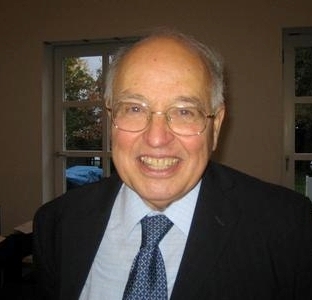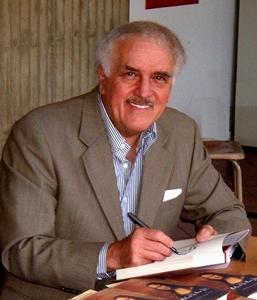Related Research Articles

Sir Michael Francis Atiyah was a British-Lebanese mathematician specialising in geometry. His contributions include the Atiyah–Singer index theorem and co-founding topological K-theory. He was awarded the Fields Medal in 1966 and the Abel Prize in 2004.

Edward Witten is an American mathematical and theoretical physicist. He is a professor emeritus in the school of natural sciences at the Institute for Advanced Study in Princeton. Witten is a researcher in string theory, quantum gravity, supersymmetric quantum field theories, and other areas of mathematical physics. Witten's work has also significantly impacted pure mathematics. In 1990, he became the first physicist to be awarded a Fields Medal by the International Mathematical Union, for his mathematical insights in physics, such as his 1981 proof of the positive energy theorem in general relativity, and his interpretation of the Jones invariants of knots as Feynman integrals. He is considered the practical founder of M-theory.
In theoretical physics, twistor theory was proposed by Roger Penrose in 1967 as a possible path to quantum gravity and has evolved into a widely studied branch of theoretical and mathematical physics. Penrose's idea was that twistor space should be the basic arena for physics from which space-time itself should emerge. It has led to powerful mathematical tools that have applications to differential and integral geometry, nonlinear differential equations and representation theory, and in physics to general relativity, quantum field theory, and the theory of scattering amplitudes. Twistor theory arose in the context of the rapidly expanding mathematical developments in Einstein's theory of general relativity in the late 1950s and in the 1960s and carries a number of influences from that period. In particular, Roger Penrose has credited Ivor Robinson as an important early influence in the development of twistor theory, through his construction of so-called Robinson congruences.

Nigel James Hitchin FRS is a British mathematician working in the fields of differential geometry, gauge theory, algebraic geometry, and mathematical physics. He is a Professor Emeritus of Mathematics at the University of Oxford.
Alexander Markovich Polyakov is a Russian theoretical physicist, formerly at the Landau Institute in Moscow and, since 1990, at Princeton University, where he is the Joseph Henry Professor of Physics.
In mathematics, a monopole is a connection over a principal bundle G with a section of the associated adjoint bundle.
Montonen–Olive duality or electric–magnetic duality is the oldest known example of strong–weak duality or S-duality according to current terminology. It generalizes the electro-magnetic symmetry of Maxwell's equations by stating that magnetic monopoles, which are usually viewed as emergent quasiparticles that are "composite", can in fact be viewed as "elementary" quantized particles with electrons playing the reverse role of "composite" topological solitons; the viewpoints are equivalent and the situation dependent on the duality. It was later proven to hold true when dealing with a N = 4 supersymmetric Yang–Mills theory. It is named after Finnish physicist Claus Montonen and British physicist David Olive after they proposed the idea in their academic paper Magnetic monopoles as gauge particles? where they state:
There should be two "dual equivalent" field formulations of the same theory in which electric (Noether) and magnetic (topological) quantum numbers exchange roles.
In mathematical physics and differential geometry, a gravitational instanton is a four-dimensional complete Riemannian manifold satisfying the vacuum Einstein equations. They are so named because they are analogues in quantum theories of gravity of instantons in Yang–Mills theory. In accordance with this analogy with self-dual Yang–Mills instantons, gravitational instantons are usually assumed to look like four dimensional Euclidean space at large distances, and to have a self-dual Riemann tensor. Mathematically, this means that they are asymptotically locally Euclidean hyperkähler 4-manifolds, and in this sense, they are special examples of Einstein manifolds. From a physical point of view, a gravitational instanton is a non-singular solution of the vacuum Einstein equations with positive-definite, as opposed to Lorentzian, metric.
In string theory, K-theory classification refers to a conjectured application of K-theory to superstrings, to classify the allowed Ramond–Ramond field strengths as well as the charges of stable D-branes.

Bülent Atalay is a Turkish-American educator, author, scientist, and artist.

Wolf Paul Barth was a German mathematician who discovered Barth surfaces and whose work on vector bundles has been important for the ADHM construction. Until 2011 Barth was working in the Department of Mathematics at the University of Erlangen-Nuremberg in Germany.
In mathematical physics and gauge theory, the ADHM construction or monad construction is the construction of all instantons using methods of linear algebra by Michael Atiyah, Vladimir Drinfeld, Nigel Hitchin, Yuri I. Manin in their paper "Construction of Instantons."
In theoretical physics, the Penrose transform, introduced by Roger Penrose, is a complex analogue of the Radon transform that relates massless fields on spacetime, or more precisely the space of solutions to massless field equations to sheaf cohomology groups on complex projective space. The projective space in question is the twistor space, a geometrical space naturally associated to the original spacetime, and the twistor transform is also geometrically natural in the sense of integral geometry. The Penrose transform is a major component of classical twistor theory.
In mathematical physics, the twistor correspondence or Penrose–Ward correspondence is a bijection between instantons on complexified Minkowski space and holomorphic vector bundles on twistor space, which as a complex manifold is , or complex projective 3-space. Twistor space was introduced by Roger Penrose, while Richard Ward formulated the correspondence between instantons and vector bundles on twistor space.

David Ian Olive was a British theoretical physicist. Olive made fundamental contributions to string theory and duality theory, he is particularly known for his work on the GSO projection and Montonen–Olive duality.

Nikita Alexandrovich Nekrasov is a mathematical and theoretical physicist at the Simons Center for Geometry and Physics and C.N.Yang Institute for Theoretical Physics at Stony Brook University in New York, and a Professor of the Russian Academy of Sciences.

In physics and mathematics, and especially differential geometry and gauge theory, the Yang–Mills equations are a system of partial differential equations for a connection on a vector bundle or principal bundle. They arise in physics as the Euler–Lagrange equations of the Yang–Mills action functional. They have also found significant use in mathematics.
Peter John Olver is a British-American mathematician working in differential geometry.
Integrable algorithms are numerical algorithms that rely on basic ideas from the mathematical theory of integrable systems.
Olaf Lechtenfeld is a German mathematical physicist, academic and researcher. He is a full professor at the Institute of Theoretical Physics at Leibniz University, where he founded the Riemann Center for Geometry and Physics.
References
- 1 2 "WARD, Prof. Richard Samuel" . Who's Who . Vol. 2016 (online Oxford University Press ed.). Oxford: A & C Black.(Subscription or UK public library membership required.)
- 1 2 Richard S. Ward at the Mathematics Genealogy Project
- ↑ Ward, R. S. (1977). "On self-dual gauge fields". Physics Letters A. 61 (2): 81–82. Bibcode:1977PhLA...61...81W. doi:10.1016/0375-9601(77)90842-8.
- ↑ Staff profile, University of Durham, retrieved May 14, 2022.
- ↑ Bulletin of the London Mathematical Society, retrieved 2016-02-27.
- ↑ Notices of the AMS - Sept 2005 American Mathematical Society
- ↑ "EC/2005/41: Ward, Richard Samuel". The Royal Society . Retrieved 19 March 2016.